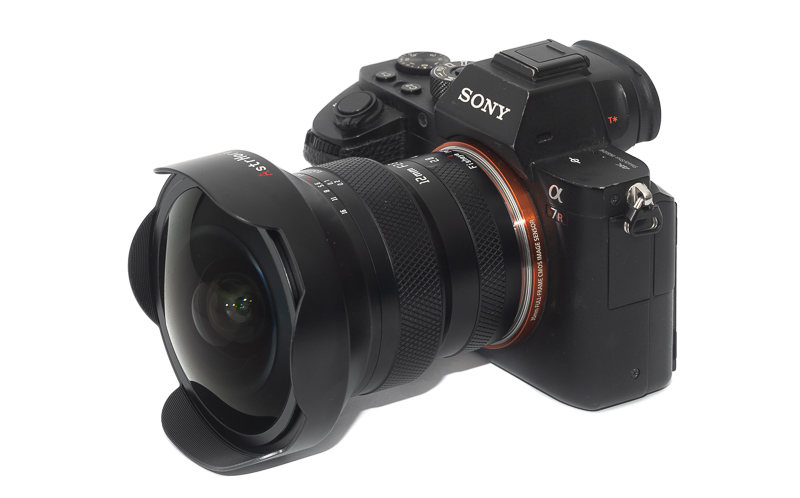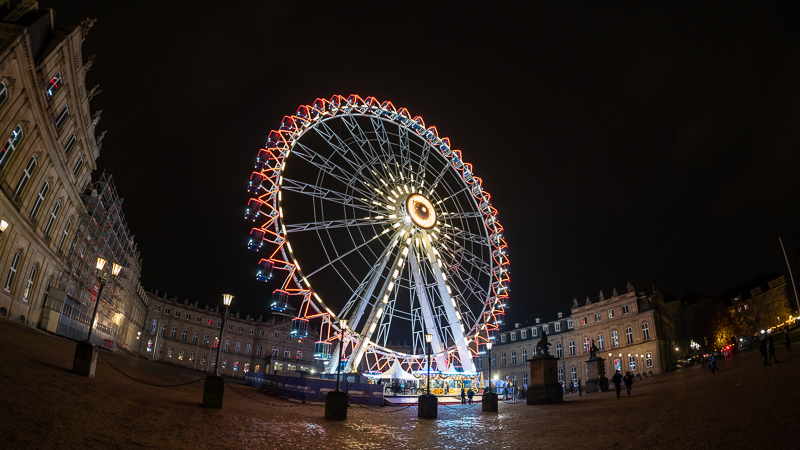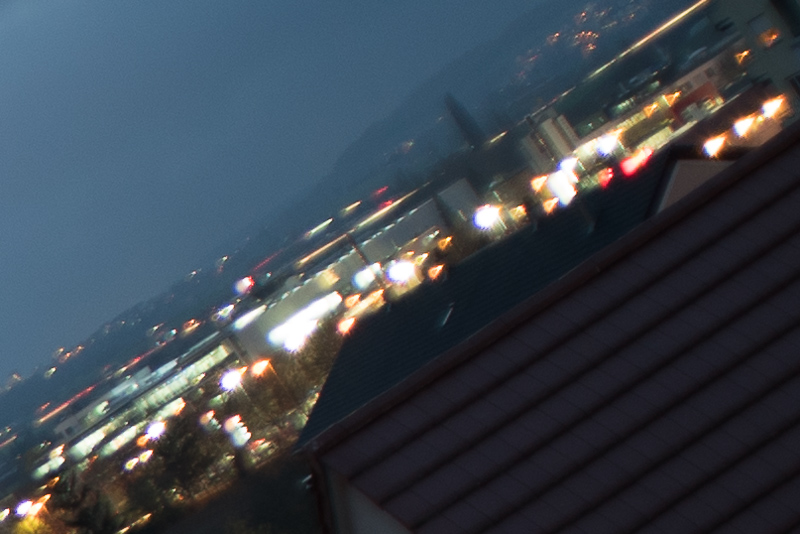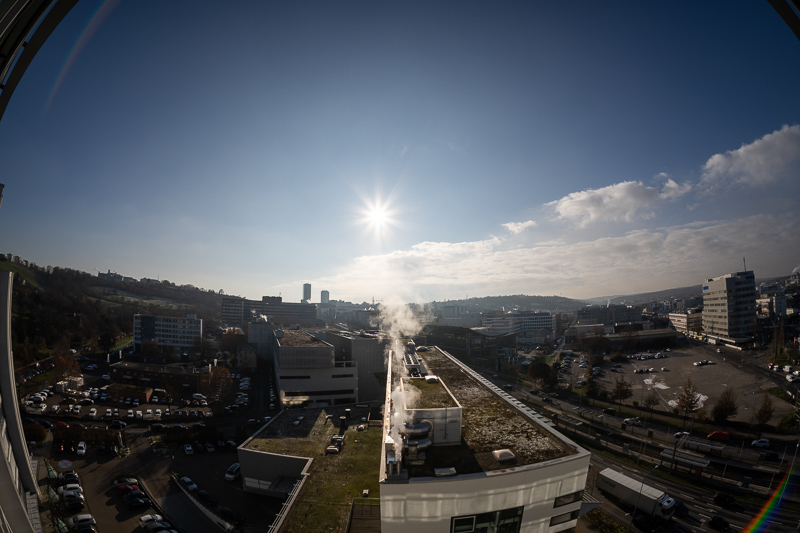Introduction

Fisheye lenses have a somewhat limited range of possible applications and I would definitely consider them niche products. Probably this is also the reason most of the big manufacturers seem to have given up on having any of these in their portfolios. So if you are looking to add a fisheye lens to your kit your only real option are lenses like this AstrHori 12mm 2.8 Fisheye from smaller manufacturers. As can be seen from the picture above this is a huge lens, but can its performance keep up with its dimensions? Let us find out in this review!
Sample Images




You can find most of the shots in this review in full resolution here.
Contents
Specifications / Version History
I am reviewing a final production model here which has the following specifications:
- Diameter: 91mm
- Field of view: 179.5° (diagonally)
- Length: 98mm
- Weight: 760g
- Filter Diameter: –
- Number of Aperture Blades: 5 (rounded)
- Elements/Groups: 11/8
- Close Focusing Distance: 0.2m
- Mount: Sony-E
buy from amazon.de | ebay.com | ebay.de (affiliate links) for $256
Disclosure
The AstrHori 12mm 2.8 Fisheye was kindly provided free of charge by AstrHori for reviewing purpose for a few weeks.
What is a fisheye lens?
This is only the second fisheye lens being reviewed here, so it might make sense to have a short look what differentiates a fisheye lens from a normal ultra wide angle lens. Most of this section is taken from my TTArtisan 11mm 2.8 Fisheye review.
Just like the TTArtisan 11mm 2.8 this AstrHori 12mm 2.8 is a diagonal fisheye, meaning it covers a field of view of 180° diagonally. There are also circular fisheyes that cover only a round image with a field of view of 180° in all directions.
Compared to rectilinear ultra wide angle lenses fisheye lenses offer a different kind of projection which at first sight look like there is a lot of distortion:
But this is not the whole story, without going too much into detail of different fisheye projections (you can do that here or here) the shape of objects closer to the corners stays closer to what they actually are. You can see that in the comparison above, the reflection of the lamp is round in the fisheye image while it is streched in the image of the rectilinear lens. So, depending on what part of the image you look at, the distortion of a fisheye lens may actually be less, not more.
Nevertheless, I personally think the usefulness of fisheye lenses is a bit limited. They are mostly useful for creating 360° panoramas, funny animal pictures/portraits and sometimes astrophotography. You can still use them for landscape photography – as some of the sample images may show – but it is not that easy to find compositions that actually work, so I would not recommend a fisheye lenses to anyone who is just starting with photography.
As shown in the example above it is also possible to defish fisheye pictures. Defishing means removing the typical fisheye distortion in post. Here the image is stretched so much, the resulting image quality leaves a lot to be desired. If you want straight lines in your pictures better get a rectilinear ultra wide angle lens in the first place.
Handling / Build Quality

Unlike some of the other manufacturers from China AstrHori came up with its own casing design – without drawing a lot of inspiration from one of the competitors.
The focus ring has a hard yet nice resistance and turns about 100° from the minimum focus distance of 0.2 m to infinity.
The aperture ring features non-equidistant half-a-stop click-stops between f/2.8 and f/8.0 and full-stop click-stops between f/8.0 and f/16. It turns ~80° from f/2.8 to f/16.
The lens seems to be mostly made from metal and all the markings are engraved and filled with paint. A metal slip on lens cap is included as well, it is padded on the inside so won’t scratch the lens.
The lens does not feature electronic contacts to communicate with your camera.
Vignetting and colorcast
With our usual approach we cannot get decent values on the vignetting of fish-eye lenses. What I can tell you is that the vignetting figures are significantly lower than those of rectilinear ultra wide angle lenses, especially compact ones.

Also similar to the Voigtlander UWA primes and some of the wide Laowa primes (12mm 2.8 and 15mm 2.0) this lens shows some slight green color cast in the corners which can become visible with bright or evenly lit skies.
Sharpness
infinity (42mp Sony A7rII)

The across frame performance is solid from f/2.8 but stopping down doesn’t change much actually. The midframe gets slightly sharper at f/5.6 and the corners look best at f/11 but in both cases there isn’t that huge difference compared to shooting this lens wide open. The performance is actually similar to what I have seen with the smaller TTArtisan 11mm 2.8 Fisheye.
Now this left me wondering a bit, because this lens’ optical design is actually very complex and I would have expected a better performance. AstrHori being new in the game my suspicion was, that the filter stack might have not been considered in this lens’ design. As I recently acquired a Sony A7rII with Kolari Ultra Thin filter modification I tested this thesis by checking how the lens performs here and indeed the across frame performance is actually pretty much flawless already at f/2.8.
But who does actually have an E-mount camera with thin filter modification? Only a handful of people worldwide. So it is rather unfortunate this lens doesn’t perform as good on a stock camera as it could (or rather should). Especially considering its dimensions and weight.
close focus (0.20 m, 42mp Sony A7rII)
With the minimum focus distance of just 0.20 m you can get really close to your subject and might even be shading it with your lens.
Already wide open the image quality is very good in the center and further increases on stopping down a bit.
There is quite some field curvature and also some other aberrations off center at this distance though, but this should hardly be an issue in the field with a fisheye lens.
Distortion
When it comes to fisheye lenses distortion is more of a feature and less of a flaw, nevertheless, it is technically possible to “correct” the distortion of a fish-eye lens. The loss in resolution is so big, this is hardly advisable though.
We have a big selection of rectilinear ultra wide angle lenses for E-mount, so if you want one, get one, not a fisheye lens.
For those that care: I was using the lens profile for the Samyang 8mm f/3.5 Fisheye in Lightroom for correction here, which worked best of all those (few) I tested.
Bokeh

Thanks to being an f/2.8 lens with a minimum focus distance of 0.2 m it is possible to create some bokeh with this lens, but being an ultra wide fisheye lens you need to be really close to your subject to do so.
In terms of quality of bokeh this AstrHori 12mm 2.8 looks generally fine to me.
Sunstars
The AstrHori is using 5 aperture blades which can lead to very distinct sunstars as we have seen with some Laowa ultra wide angle lenses. But here the blades are rounded and their alignment might also not be perfect, as it needs stopping down to f/11 to f/16 to create distinct sunstars and they are still a bit frayed.
If you want to learn more about sunstars have a look at this article.
Coma correction
100% crops from extreme corner, focused on center, A7rII
Already in the sharpness section we saw solid but not outstanding corner sharpness and most of the time the performance there is closely related to the coma correction. Generally the correction is decent at f/2.8 and I think slightly better than the TTArtisan’s. Even stopped down to f/5.6 the corners don’t look perfectly clean though.
Here I included a crop of a picture taken at f/2.8 on a camera with Ultra Thin filter modification and we see very clean corners. Cleaner than the lens ever gets on the stock camera. This is again a bit unfortunate, as astrophotography is probably one of the main applications for fisheye lenses.
Flare resistance
With a fisheye lens, thanks to their huge viewing angle, you will often have the sun or other point light sources in the frame, so a good performance here is kinda important. The AstrHori 50mm 1.4 Tilt already fared surprisingly well in this category, will this fisheye manage to do the same?

Generally the performance of the AstrHori 12mm 2.8 Fisheye in this category is remarkable. No matter whether the sun is inside or outside the frame I couldn’t detect any ghosts or any issues with veiling flare.
It if wasn’t for these small rainbow artefacts in the corners with a strong point light source in the center of the frame the performance could even be called flawless.
Chromatic aberrations
lateral
Out of all the fisheye lenses I tried so far (5 including this) this one is doing the best job at correcting lateral CA, they are actually hardly visible. You can correct these by one click e.g. in Lightroom.
longitudinal

Also longitudinal CA (including purple fringing) are corrected so well, they are hardly noticeable.
Alternatives
TTArtisan 11mm 2.8 Fisheye:
At 440g the TTArtisan lens is much lighter and also smaller. It looses when it comes to flare resistance and CA correction, but performs similar in terms of sharpness and coma correction.
buy from the manufacturer’s shop | B&H | amazon.com | amazon.de | ebay.com | ebay.de (affiliate links) for $215
7Artisans 10mm 2.8 Fisheye:
I haven’t used this one. In terms of weight and size it sits inbetween the aforementioned TTArtisan and this AstrHori.
buy from amazon.com | B&H | ebay.com | amazon.de | ebay.de for $256 (affiliate links).
Samyang 12mm 2.8 Fisheye:
I have shortly been using this lens on my Nikon DSLRs and via adapter on a 24mp Sony camera. It is very good optically while also being very big and more expensive.
buy from amazon.com | B&H | ebay.com | amazon.de | ebay.de for $419 (affiliate links).
Canon 8-15mm 4.0L Fisheye USM:
This is a rather odd/interesting Fisheye zoom lens. At 8mm you have a 180° circular fisheye while at 15mm you have a 180° diagonal fisheye. If you have use for both this lens can be a good option. Not long ago Nikon introduced a similar lens, but as it is harder to adapt to Sony I recommend the Canon lens.
buy from amazon.com | B&H | ebay.com | amazon.de | ebay.de for $1249 (affiliate links).
Conclusion
good
|
average
|
not good
|
As far as I know only 3 different diagonal fish eye lenses designed for fulIframe sensors have been released yet (as of Dec. 2022): the 7Artisans 10mm 2.8, the TTArtisan 11mm 2.8 and this AstrHori 12mm 2.8. They are all similarly priced but their weight and dimensions differ noticeably. This AstrHori one is by far the biggest and heaviest, so I would also expect it to perform the best.
Compared to the TTArtisan 11mm 2.8 correction of CA and flare resistance are visibly better and I also like the build quality a little more (thanks to click stops on the aperture ring mostly). In terms of sharpness (especially corner) and coma correction (important if you want to use the lens for astrophotography) I hardly see any benefits over the much smaller TTArtisan lens though.
The optical design is rather complex, the MTF claim great performance across frame already at f/2.8 and I don’t see any decentering issues with this sample, so what happened?
The AstrHori 12mm 2.8 simply doesn’t play that well with the thick Sony filter stack. I tried the lens on my Sony A7rII with thin filter modification and here the performance matches what we see in the MTF graphs and – as I have shown – the coma correction also looks way better.
Where does this leave us? I think this lens is a great option for users of Nikon Z cameras that have a thinner filter stack by design, but for the average E-mount user I wonder if the better flare resistance and CA correction are enough to choose this lens over the way more portable TTArtisan 11mm 2.8.
buy from amazon.de | ebay.com | ebay.de (affiliate links) for $256
Sample Images






You can find most of the shots in this review in full resolution here.
Further Reading
- Sony FE lenses: Our comprehensive and independent guide
- How to take better pictures? Composition techniques
- Lens aberrations explained
- Analogue Adventures
Support Us
Did you find this article useful or just liked reading it? Treat us to a coffee!
![]()
![]()
![]() via Paypal
via Paypal
This site contains affiliate links. If you make a purchase using any of the links marked as affiliate links, I may receive a small commission at no additional cost to you. This helps support the creation of future content.
Latest posts by BastianK (see all)
- Review: Thypoch 21mm 1.4 Simera - July 12, 2025
- Review: SLRmagic 50mm 0.95 Hyperprime LM - July 5, 2025
- Full Resolution Pictures getting fixed - July 4, 2025






















Oh well, back to Samyang 🙂
Also the Samyang 12/2.8 has a “native” Sony FE version too – the same DSLR design, but with the adapter incorporated, so the same category as other 3+1 manual options so far.
I was really hoping this one would move the bar a bit with the size/weight. And 5 piece aperture but with round blades for weak sunstars?? What a letdown :/
Thanks a lot, Bastian. Another very pleasing review on a lens that will not be reviewed often by other medias. But such a lens can give you the one picture at an event no one else can take. E.g. a very dramatic view at a crowd of people or a new view on the ceiling within a building. For this cause I love my TTartisan 11mm f2,8.
Hi Bastian, in the pass with Canon reflex i used both Canon and Sigma 15mm 180° diagonal, Canon for me was better than Sigma.
Both was very funny lens and difficult too use, i really appreciate these lens shooting northing light in Tromso, is have good pic from the The Arctic Cathedral in Tromso.
I think you can also add a comparison with the Laowa 9mm f/5.6 (which is I believe more than double the price)
something to note, at least on my lens. is that infinity focus is NOT the end of the “thread” but where its marked on the lens. In a way i wish it was not, since you have to be careful to not push focus to the final position since it will make focus soft.
is this your case too?
This has to be the case for modern lenses with ED elements as otherwise you would not be able to focus at infinity at different temperatures anymore.